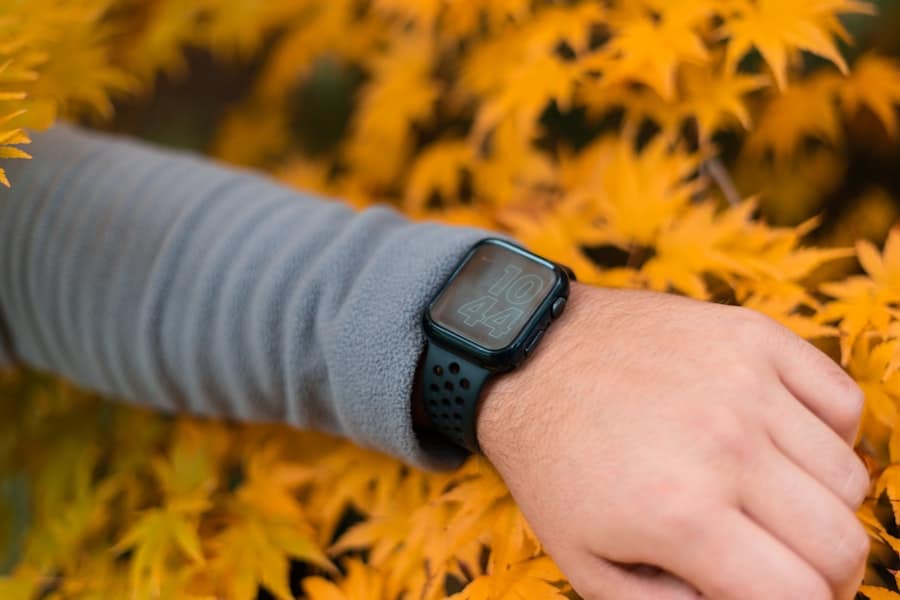The advent of technology has revolutionized various sectors, and education is no exception. Smart wearables, which include devices such as smartwatches, fitness trackers, and augmented reality glasses, have begun to carve out a niche in educational environments.
In the context of education, smart wearables offer a unique opportunity to enhance learning experiences, facilitate real-time feedback, and promote student engagement. As educational institutions increasingly adopt these technologies, it becomes essential to explore their implications for student learning and overall academic performance. The integration of smart wearables into educational settings is not merely a trend; it represents a paradigm shift in how educators approach teaching and learning.
By leveraging data collected from these devices, educators can gain insights into student behavior, engagement levels, and even emotional states. This data-driven approach allows for more personalized learning experiences tailored to individual student needs. As we delve deeper into the impact of smart wearables on education, it is crucial to understand the underlying factors that influence student concentration and how these devices can be utilized to foster an environment conducive to learning.
Key Takeaways
- Smart wearables have the potential to revolutionize education by enhancing student learning and performance.
- Student concentration plays a crucial role in academic performance and can be impacted by various factors.
- Smart wearables offer the potential to monitor and analyze student concentration levels in real-time.
- Smart wearables can help improve student productivity by providing personalized feedback and insights.
- Challenges and limitations in using smart wearables in education include cost, data privacy, and integration with existing systems.
The Impact of Student Concentration on Academic Performance
Concentration is a critical component of effective learning. Research has consistently shown that students who can maintain focus during lessons tend to perform better academically. Concentration affects not only the ability to absorb information but also the capacity to engage in critical thinking and problem-solving.
Factors such as classroom environment, teaching methods, and even individual student characteristics play a significant role in determining concentration levels. For instance, a noisy classroom or an unengaging lecture can lead to distractions that hinder a student’s ability to concentrate. Moreover, the duration of concentration can vary significantly among students.
Some may find it easier to focus for extended periods, while others may struggle with maintaining attention even for short intervals. This variability underscores the importance of understanding the factors that contribute to concentration and how they can be influenced by external stimuli. In this context, smart wearables can serve as valuable tools for monitoring concentration levels in real-time, providing educators with insights that can inform instructional strategies and classroom management techniques.
The Potential of Smart Wearables in Monitoring Student Concentration

Smart wearables are equipped with advanced sensors capable of tracking various physiological indicators that correlate with concentration levels. For example, heart rate variability, skin conductance, and even eye movement can provide valuable data about a student’s engagement and focus during lessons. By analyzing this data, educators can identify patterns that indicate when students are most attentive or when they may be losing focus.
This real-time monitoring allows for timely interventions, such as adjusting teaching methods or incorporating breaks to re-engage students. One notable example of this application is the use of smartwatches equipped with biometric sensors in classrooms. These devices can alert teachers when a student’s heart rate spikes or when their activity levels drop significantly, signaling a potential loss of concentration.
Educators can then implement strategies such as interactive activities or group discussions to recapture students’ attention. Additionally, some smart wearables offer gamified elements that encourage students to stay engaged by rewarding them for maintaining focus or completing tasks within set timeframes.
The Role of Smart Wearables in Improving Student Productivity
Beyond monitoring concentration, smart wearables have the potential to enhance overall student productivity. These devices can facilitate better time management by providing reminders for assignments, deadlines, and study sessions. For instance, a smartwatch can send notifications about upcoming tests or suggest optimal study times based on the user’s historical performance data.
This proactive approach helps students stay organized and accountable for their academic responsibilities. Furthermore, smart wearables can promote healthy habits that contribute to improved productivity. Many devices come with features that encourage physical activity, such as step counters or reminders to take breaks and stretch.
Research has shown that physical activity can boost cognitive function and enhance focus, making it essential for students to incorporate movement into their daily routines. By integrating these health-promoting features into their educational experience, students may find themselves more energized and better equipped to tackle academic challenges.
Challenges and Limitations of Using Smart Wearables in Education
Despite the promising potential of smart wearables in education, several challenges and limitations must be addressed before widespread implementation can occur. One significant concern is the cost associated with acquiring and maintaining these devices. Educational institutions may face budget constraints that limit their ability to invest in technology for all students.
Additionally, disparities in access to technology can exacerbate existing inequalities among students, particularly in underfunded schools. Another challenge lies in the potential for distraction that smart wearables may introduce. While these devices are designed to enhance learning experiences, they can also serve as sources of distraction if not used appropriately.
Notifications from social media or other applications may divert students’ attention away from their studies. Educators must establish clear guidelines on how these devices should be used in the classroom to mitigate potential distractions while maximizing their benefits.
Ethical Considerations and Privacy Concerns

The integration of smart wearables into educational settings raises important ethical considerations and privacy concerns that must be carefully navigated. The collection of biometric data and personal information from students necessitates robust data protection measures to ensure that sensitive information is not misused or compromised. Schools must establish clear policies regarding data ownership, usage, and sharing to protect students’ privacy rights.
Moreover, there is a risk of surveillance culture emerging within educational environments where constant monitoring could lead to feelings of anxiety or discomfort among students. It is essential for educators and administrators to strike a balance between utilizing data for improving educational outcomes and respecting students’ autonomy and privacy. Engaging students in discussions about data usage and obtaining informed consent can help foster a culture of transparency and trust.
Implementing Smart Wearables in Educational Settings
Successfully implementing smart wearables in educational settings requires careful planning and collaboration among stakeholders. Educators must receive adequate training on how to effectively integrate these devices into their teaching practices while ensuring that they align with curriculum goals. Professional development programs should focus on equipping teachers with the skills needed to interpret data collected from wearables and translate it into actionable insights for improving student learning.
Additionally, schools should consider piloting smart wearable programs before full-scale implementation. This approach allows educators to assess the effectiveness of these devices in enhancing student engagement and performance while identifying potential challenges early on. Feedback from students, parents, and teachers during pilot programs can inform necessary adjustments and improvements before broader adoption.
Future Trends and Developments in Smart Wearables for Education
As technology continues to evolve, the future of smart wearables in education holds exciting possibilities. Advances in artificial intelligence (AI) and machine learning could lead to even more sophisticated data analysis capabilities, allowing educators to gain deeper insights into student behavior and learning patterns. For instance, AI algorithms could predict when a student is likely to disengage based on historical data, enabling timely interventions tailored to individual needs.
Moreover, the integration of augmented reality (AR) into smart wearables presents new opportunities for immersive learning experiences. AR-enabled glasses could provide students with interactive visualizations of complex concepts, enhancing their understanding through experiential learning. As these technologies develop further, they have the potential to transform traditional educational paradigms by creating dynamic learning environments that cater to diverse learning styles.
In conclusion, while challenges remain in the adoption of smart wearables in education, their potential benefits are significant. By fostering greater concentration, improving productivity, and providing valuable insights into student behavior, these devices can play a pivotal role in shaping the future of education. As we move forward into an increasingly digital age, it will be essential for educators and policymakers to navigate the complexities associated with these technologies while prioritizing student well-being and academic success.
In a recent article on the best software for 3D animation, the importance of utilizing cutting-edge technology to enhance productivity and creativity is highlighted. This concept aligns with the idea of using smart wearables to monitor student concentration and productivity in educational settings. By incorporating innovative tools and software, such as those recommended for 3D animation, educators can create a more engaging and interactive learning environment for students. The integration of technology in education continues to evolve, offering new opportunities for enhancing student learning outcomes.
FAQs
What are smart wearables?
Smart wearables are electronic devices that can be worn as accessories or clothing and are equipped with advanced technology to perform various functions such as tracking physical activity, monitoring health metrics, and providing notifications.
How do smart wearables monitor student concentration?
Smart wearables can monitor student concentration by tracking biometric data such as heart rate, skin conductance, and movement patterns. These data can provide insights into a student’s level of focus and attention during academic tasks.
What role do smart wearables play in monitoring student productivity?
Smart wearables can track factors such as physical activity, sleep patterns, and stress levels, which can all impact a student’s productivity. By analyzing these metrics, smart wearables can provide feedback on a student’s overall productivity and suggest ways to improve it.
What are the potential benefits of using smart wearables to monitor student concentration and productivity?
The potential benefits of using smart wearables to monitor student concentration and productivity include providing personalized feedback to students, identifying patterns that may affect academic performance, and promoting self-awareness and self-regulation of behavior.
Are there any privacy concerns associated with using smart wearables to monitor students?
Yes, there are privacy concerns associated with using smart wearables to monitor students, particularly regarding the collection and storage of sensitive biometric data. It is important for educational institutions to have clear policies and procedures in place to protect students’ privacy and ensure that data is used responsibly.

